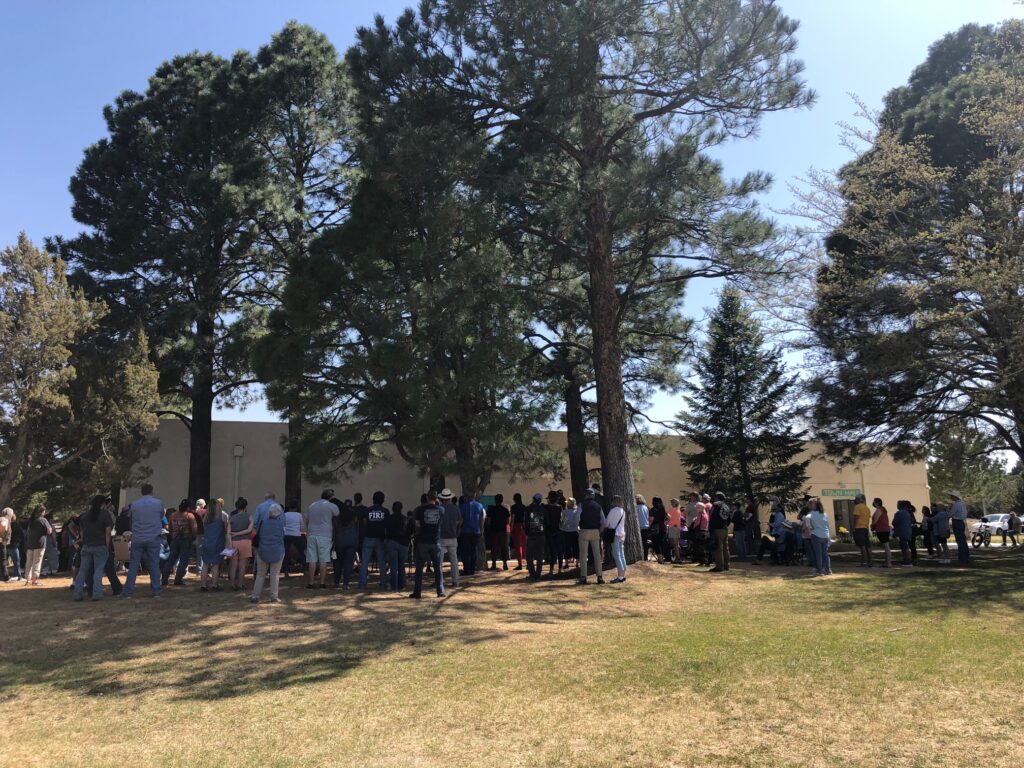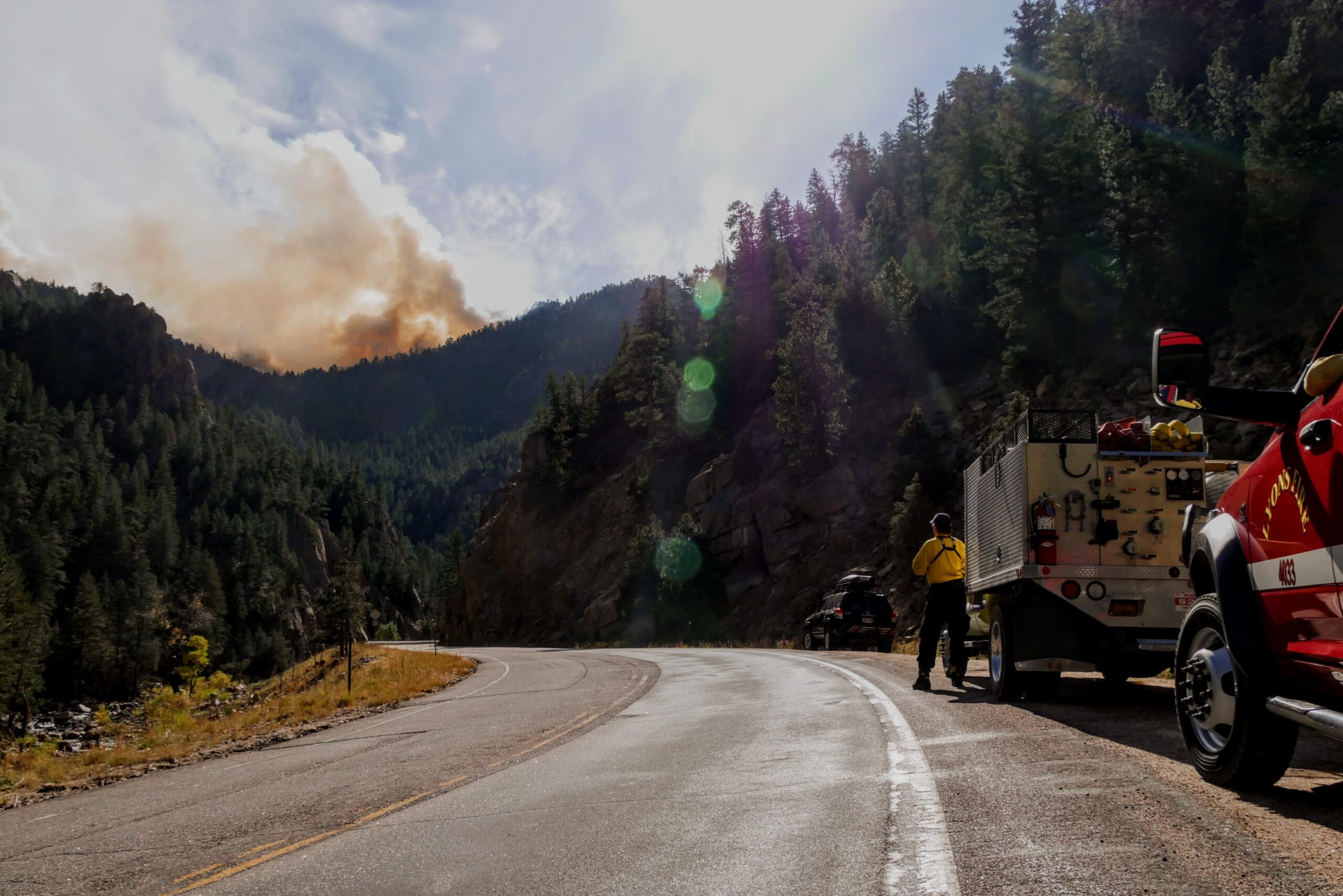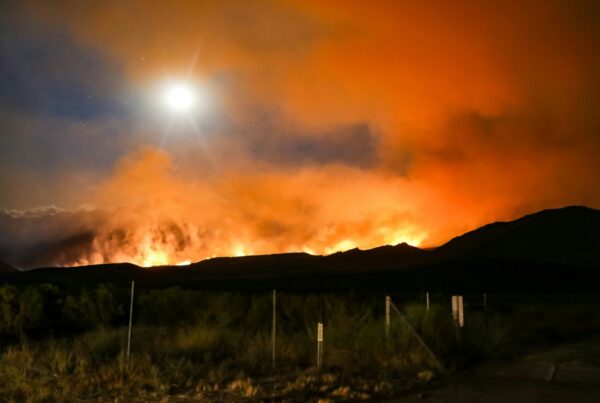As you may have noticed the last couple years, there is no longer any single wildfire season.
The now-annual campaign to tame the nation’s wildfires will start earlier and last longer, as rural communities in northern New Mexico have experienced in late April and early May.
According to Reuters on May 1, thousands of northern New Mexico residents have fled their villages and small towns as overwhelming winds gusting over 40 miles per hour fueled the largest currently active U.S. wildfire totaling 165,275 acres as of May 5. Its tiny, yet destructive embers are reportedly still drifting toward the drought-baked Calf Canyon and the communities of Ledoux, Cleveland, and Mora.
These at-risk farming villages are truly historic, as they were settled in Spanish colonial times. They lie directly in the path of the wildfire, which appears to be the most disastrous of the dozen infernos that are becoming more far-reaching and financially catastrophic as climate change exacerbates the ever-drier conditions.
Darlene Gallegos, farmer and owner of the village of Mora’s country market, was told by local police to close her store and escape the village. Her heartbreaking response: “Where are we supposed to run to, where do we go, this is where our livelihoods are.”
The wildfire has been raging since April 19, enveloping hundreds of properties and, like Darlene, forcing the evacuation of dozens of settlements in or near the San de Cristo Mountains. The fire has forced mandatory evacuations in the counties of San Miguel and Mora, compelling officials to release the following statement: “This emerging situation remains extremely serious and refusal to evacuate could be a fatal decision.”
The ever-increasing costs of weather- and disaster-related events in the U.S.
According to the National Centers for Environmental Information, the United States has sustained 323 weather and climate disasters since 1980 where overall damages and costs reached or exceeded $1 billion (including the Consumer Price Index adjustment in 2022). The total cost of those 323 events exceeds $2.195 trillion, directly and indirectly affecting hundreds of thousands to millions of Americans’ financial lives, particularly in the lower-income and rural areas of the country.
In the decade of the 2010s alone (2010-2019), there were 128 weather and climate disasters (average 12.8 per year), totaling $891.5 billion (avg. $89.2 billion per year) in damage, and taking 5,227 lives (523 per year).
In 2021, there were 20 weather and climate disaster events costing $148 billion and taking 724 lives.
The financial cost from these annual assaults on victims’ communities and personal property grows more staggering by the year. According to the National Resources Defense Council, four in 10 Americans live in a county that was struck by a climate-related disaster last year.
Unfortunately, climate events created even more damaging consequences in 2021, including illnesses, injuries, and additional deaths. In June, one such event in the Western U.S. had researchers estimating that hundreds of people perished in Oregon and Washington state due to the roasting 110-degree “heat dome” that engulfed the region for two weeks. Additionally, temps in Las Vegas reached a record-high of 114 degrees while Palm Springs topped 123 degrees.
Due to the fact that crop damage and repair costs did not exceed $1 billion during that alarming and dangerous ordeal affecting millions of people, this unprecedented atmospheric anomaly – evaluated by climate science experts as “virtually impossible” without the influence of human-caused climate change – was not included in the 2021 dollar figure supplied by NOAA.
The most difficult aspect of the Pacific Northwest’s battle with the heat dome was that King County, which includes the city of Seattle, released a heat map showing less-affluent neighborhoods, where tree cover is low, experienced dangerous effects of heat more acutely than the region’s more affluent communities. These devastating effects are largely due to the fact that Seattle landlord-tenant laws don’t require air conditioning like they do heating. Also, figuring in Seattle’s relatively mild year-round temps, local engineers claim it often comes down to “cost effectiveness.”
That should tell you a lot; lower-income communities in both urban and rural areas will be disproportionately impacted by climate change relative to other, higher-income communities. We can expect a lot more of these developments for low-income communities the worse climate change becomes.

Photo: Denise Wymore, New Mexico
Lower-income populations getting burned the most due to weather disasters, climate change
It remains an ugly, albeit eminently fixable, reality that banking deserts take up a disproportionate share of underserved and unbanked communities throughout the U.S. It’s both a double-whammy and an insult to injury when climate events compound to further harm those communities’ environmental, and thereby financial, conditions.
As of May 4, residents in the city of Las Vegas, New Mexico (again, New Mexico, NOT Nevada), have been witnessing aerial firefighting airplanes battle a 165,275-acre fire that has incinerated roughly 170 homes and has only continued to grow. Winds are threatening to push the flames closer to the town.
So what is Darlene and her fellow Mora residents supposed to do after they leave their homes and businesses? They have been through so much already these last two years, now they have to find the financial resources necessary to contend with the dangers of annual wildfires. These townspeople can’t depend on a bank account flush with cash to help them out when skyscraper-size flames have overtaken the only home they’ve ever known. These families need fast, easy, and accessible funds to get them from here to there in a matter of hours, much less days.
This is where today’s responsible small dollar loans can make the difference between softening residents’ landing after a life-shattering event versus suffering an unrecoverable financial catastrophe. This solution is especially poignant for residents in deeply rural areas of the U.S. who are more susceptible to the effects of climate disasters. The benefit for credit unions that set up wildfire loans, or any natural disaster loan, is it allows the cooperatives to employ flexible, less-restrictive underwriting criteria and possibly customize their small dollar loan amounts, rates, and terms.
Disaster can now strike at any time, and you can offer your members a digital QCash Financial First Responder Loan. Regardless of the disaster – say wildfire, flooding, tornado, or economic crisis – your members will know to come to you for help, no matter when or where they need it.
By using our life event lending platform, your credit union can offer anytime loans to distressed members in need of fast funds, evaluated by our relational-decisioning platform and deposited in members’ accounts within 60 seconds. Providing access to funds can help members secure – at the very least – temporary housing, personal protective equipment (PPE), and food resources following the devastating loss of their homes.
Not all of this year’s wildfires will be located in remote areas of our country where financial institutions can be difficult to come by. Some climate disasters will strike less rural areas where community-oriented credit union branch locations can be found. We reach out to those cooperatives, and every other cooperative out there, so please work with us to give your members a fighting chance and a financial lifeline when a life event or emergency happens.
Has your credit union provided your community members emergency funding programs to off-set weather- and climate-related disasters in your region? Tell us your CU story in the comments below!






